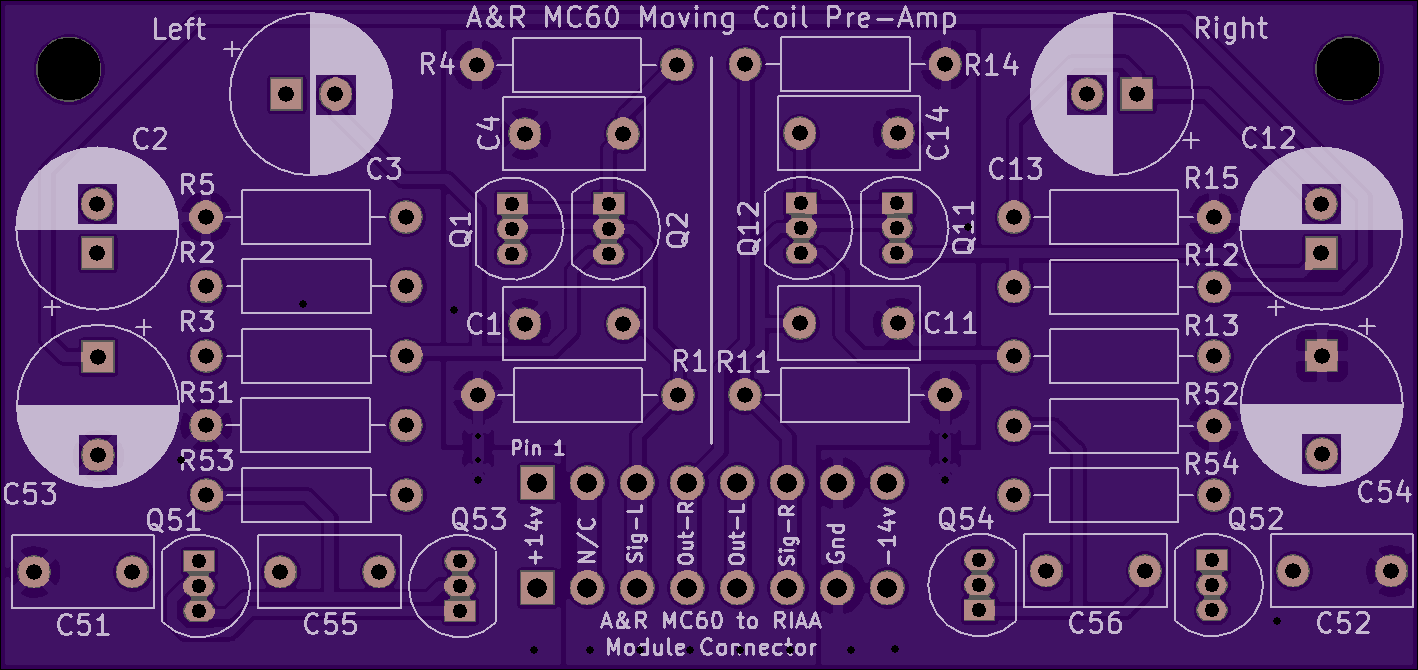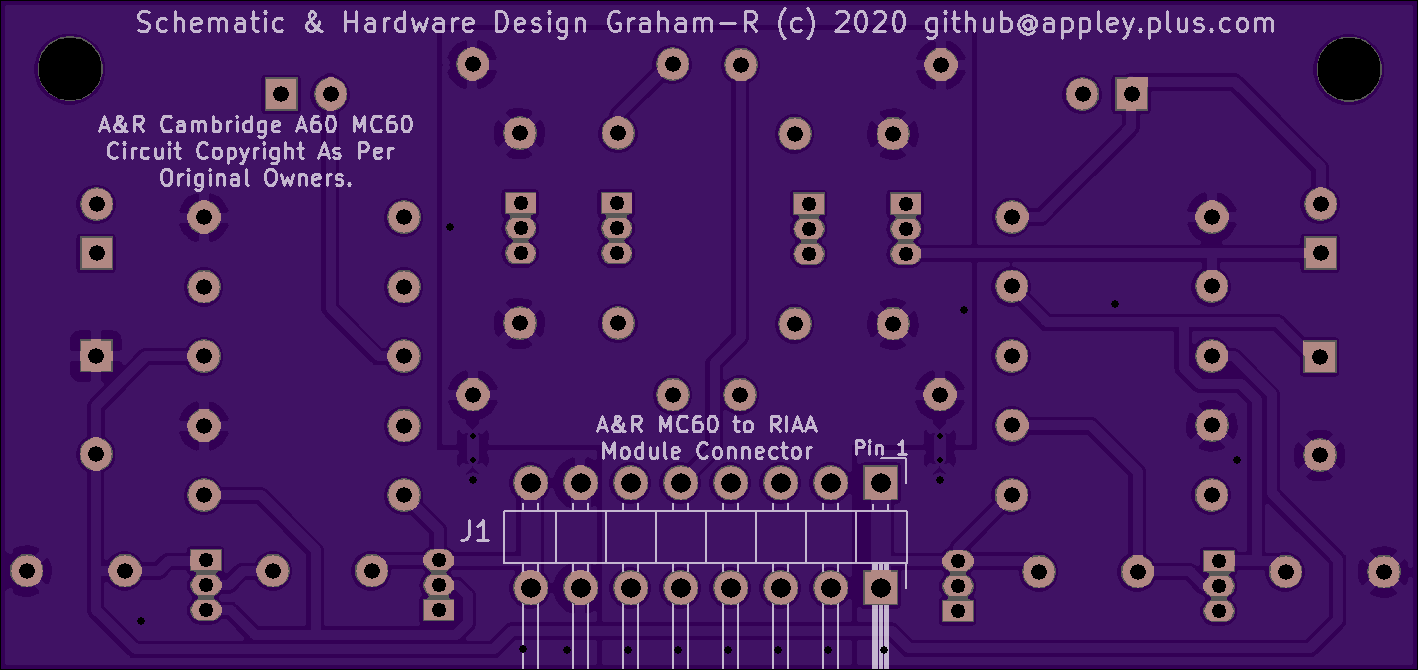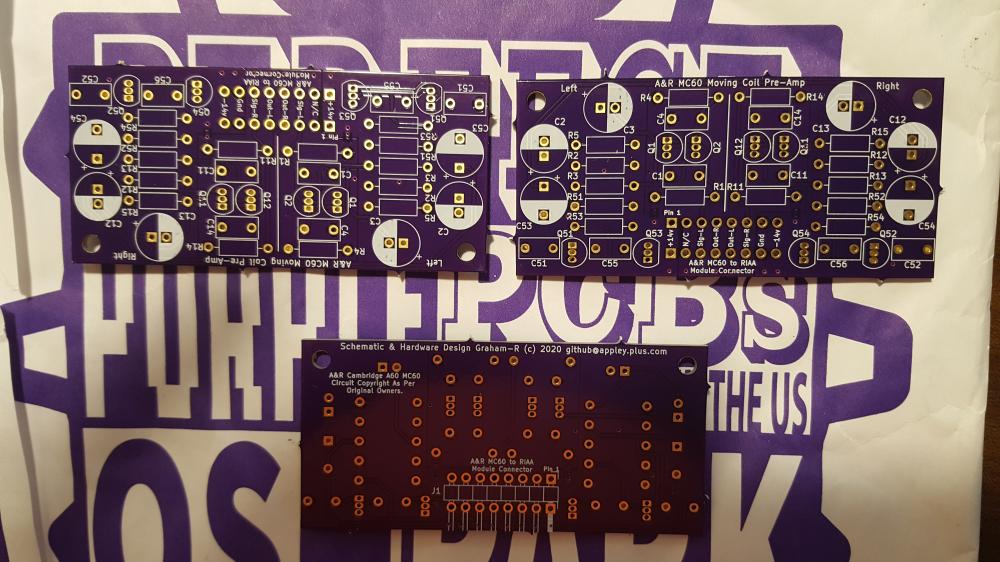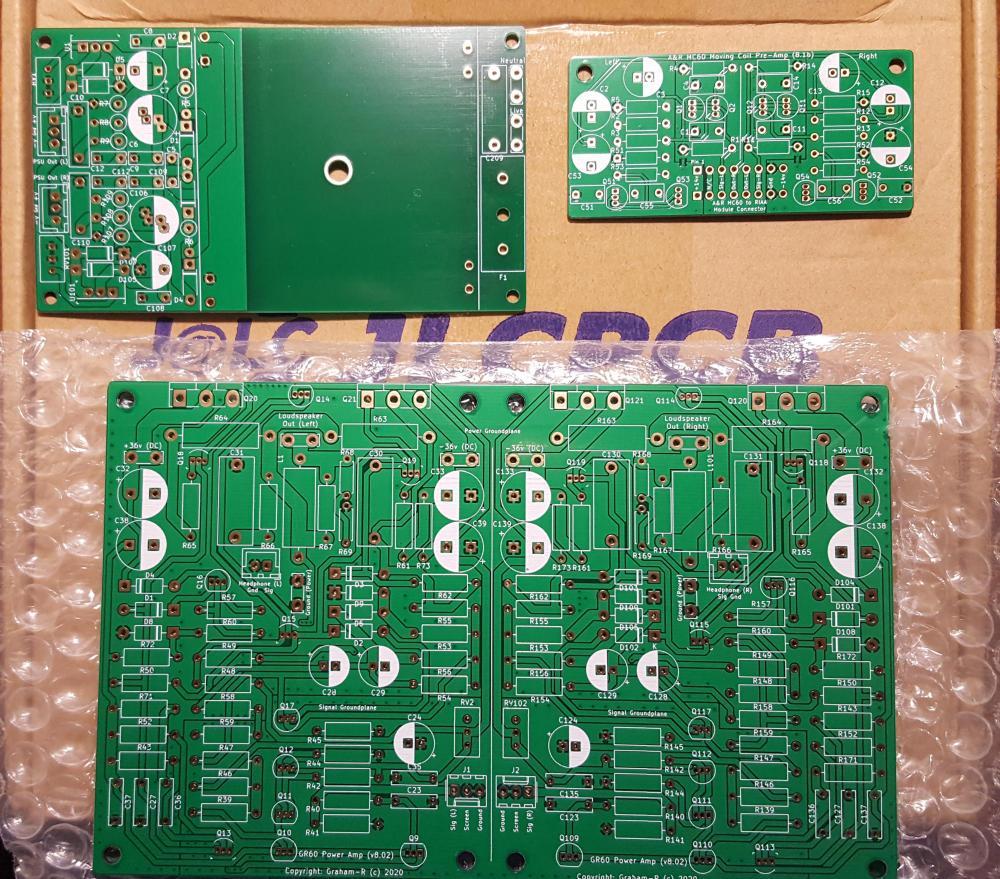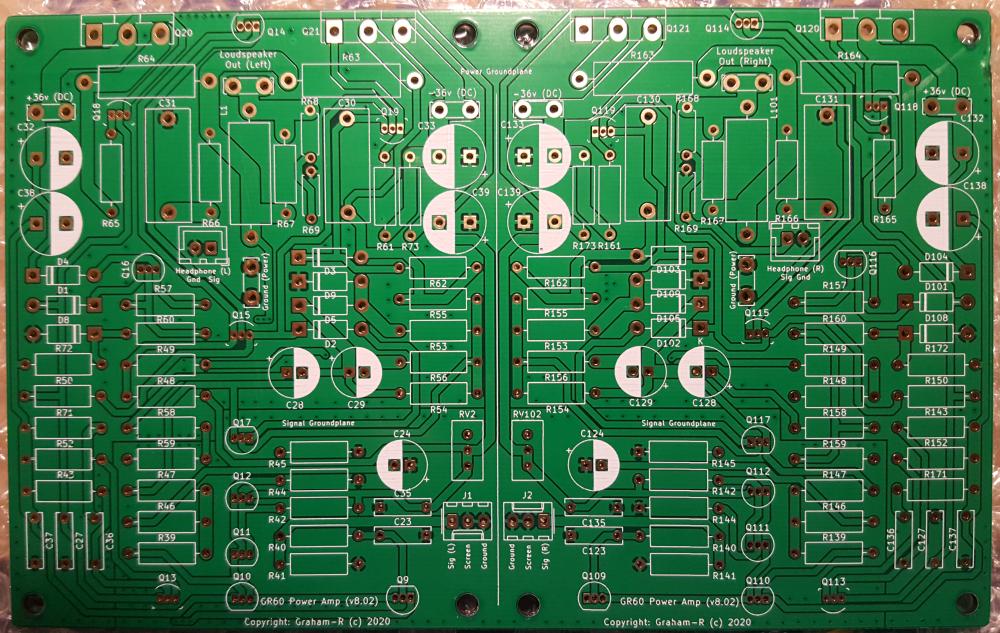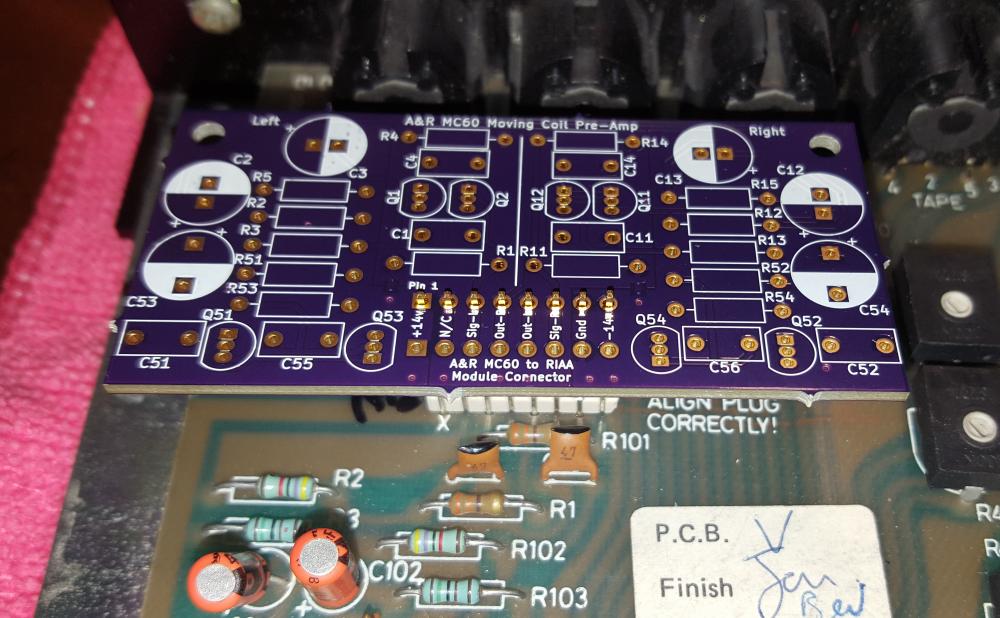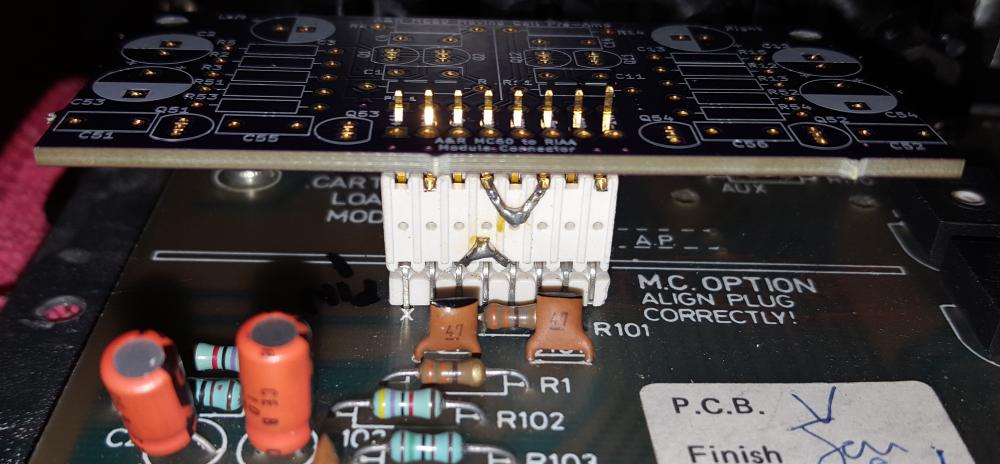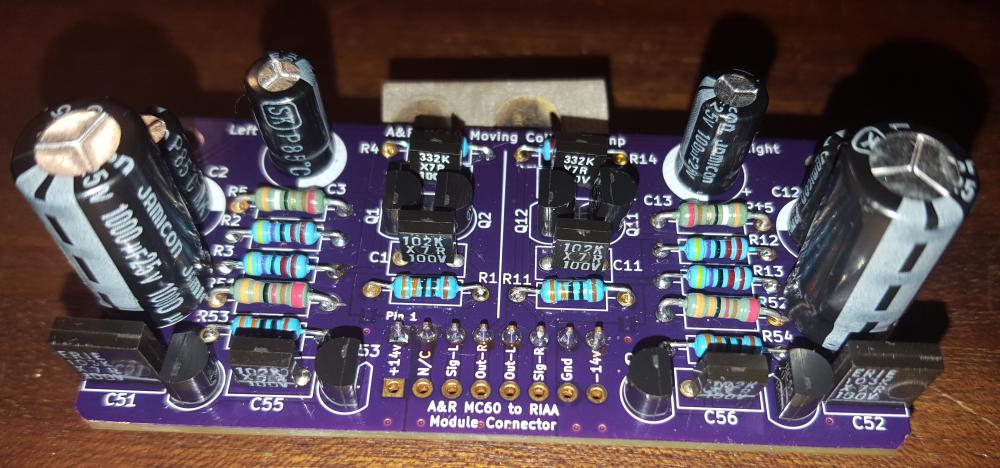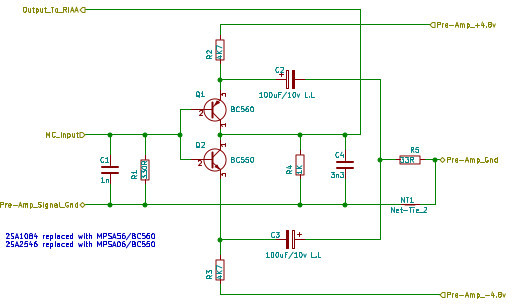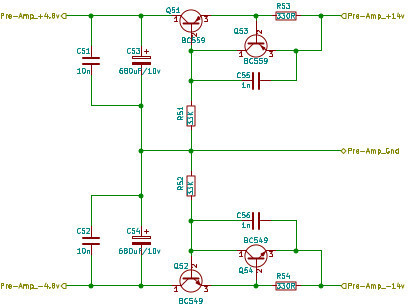graham-r
pfm Member
OK, so this is as a direct result of being stuck at home with too much time on my hands.....
For the past few weeks I have been teaching myself to use KiCAD (I might be needing this for work....), so I chose a couple of subjects and started converting schematics into actual PCB designs (i.e. Gerbers).
These included some Jaguar car reversing camera RGB interfaces, and the A&R A60, the latter was so I could eventually make a 4 channel car audio system for a car, and perhaps also a 'clone' A&R A60. I have completed various Power Amp version, the pre-amp/tone controls and the RIAA module. I haven't yet got around to ordering any PCB's for these yet - I am loathe to use the Chinese fabs after recent events.
This thread is concerned with the MC60 moving coil module, I don't have one of these and when they do come up for sale they are stupidly expensive considering what they are (simple).
So I knocked one up myself, which is identical apart from two changes - I am using different transistors in the amp stage and the connector seems to be an obscure (French ?) thing called a 'Pressac'.
For the latter I decided to use a standard pin socket to replace the existing PCB mounted connector and either a straight or 90 degree pin header (think Raspberry Pi), these can be updated at a later date.
Anyway if this works I may well design an updated version with at least a better PSU.
I have just ordered 3 PCB's from OSHPark which are likely to take several weeks to arrive so until then not much more to say, apart from uploading a schematic.
Here are some pics of how it should appear when built.
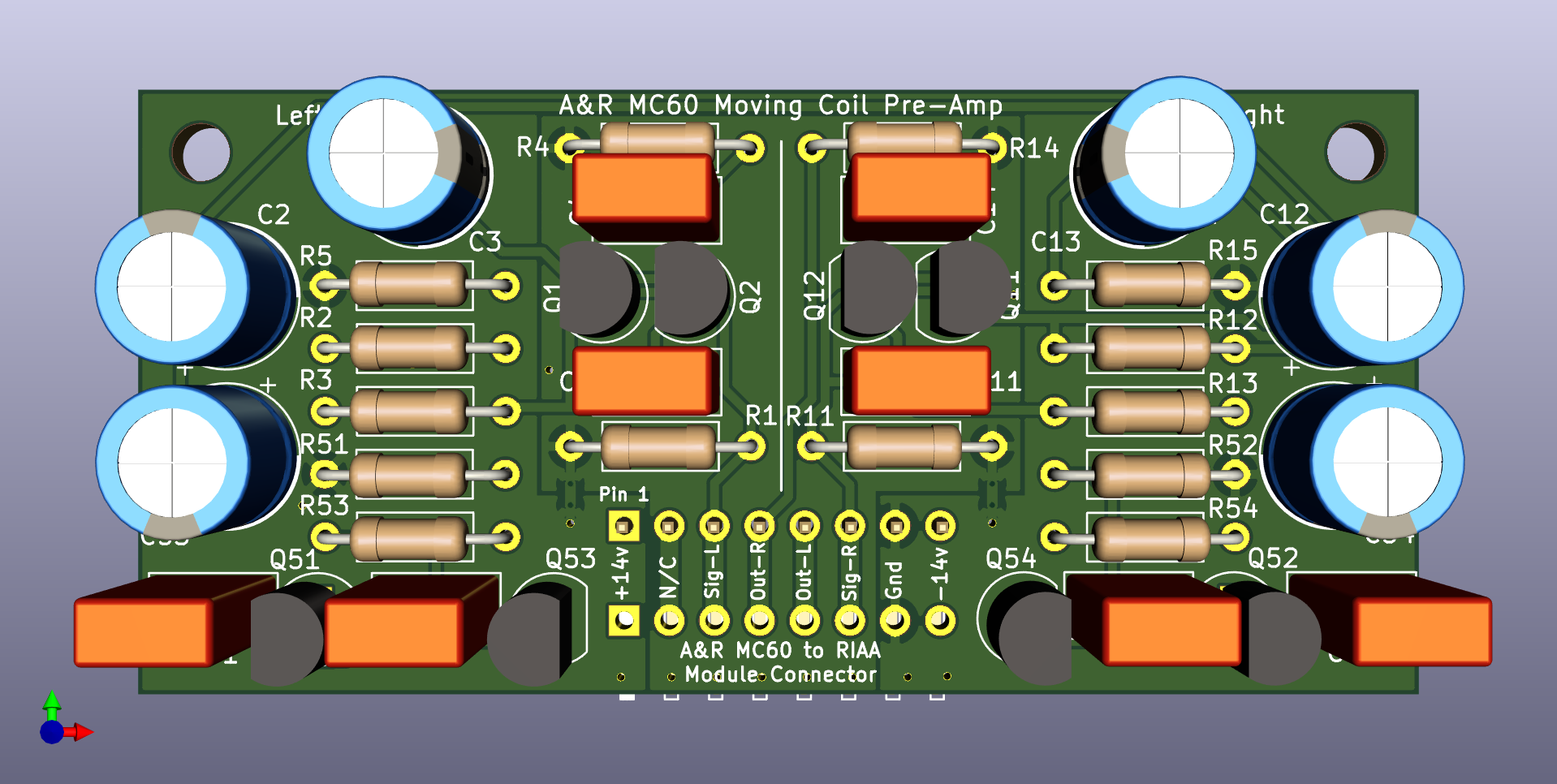
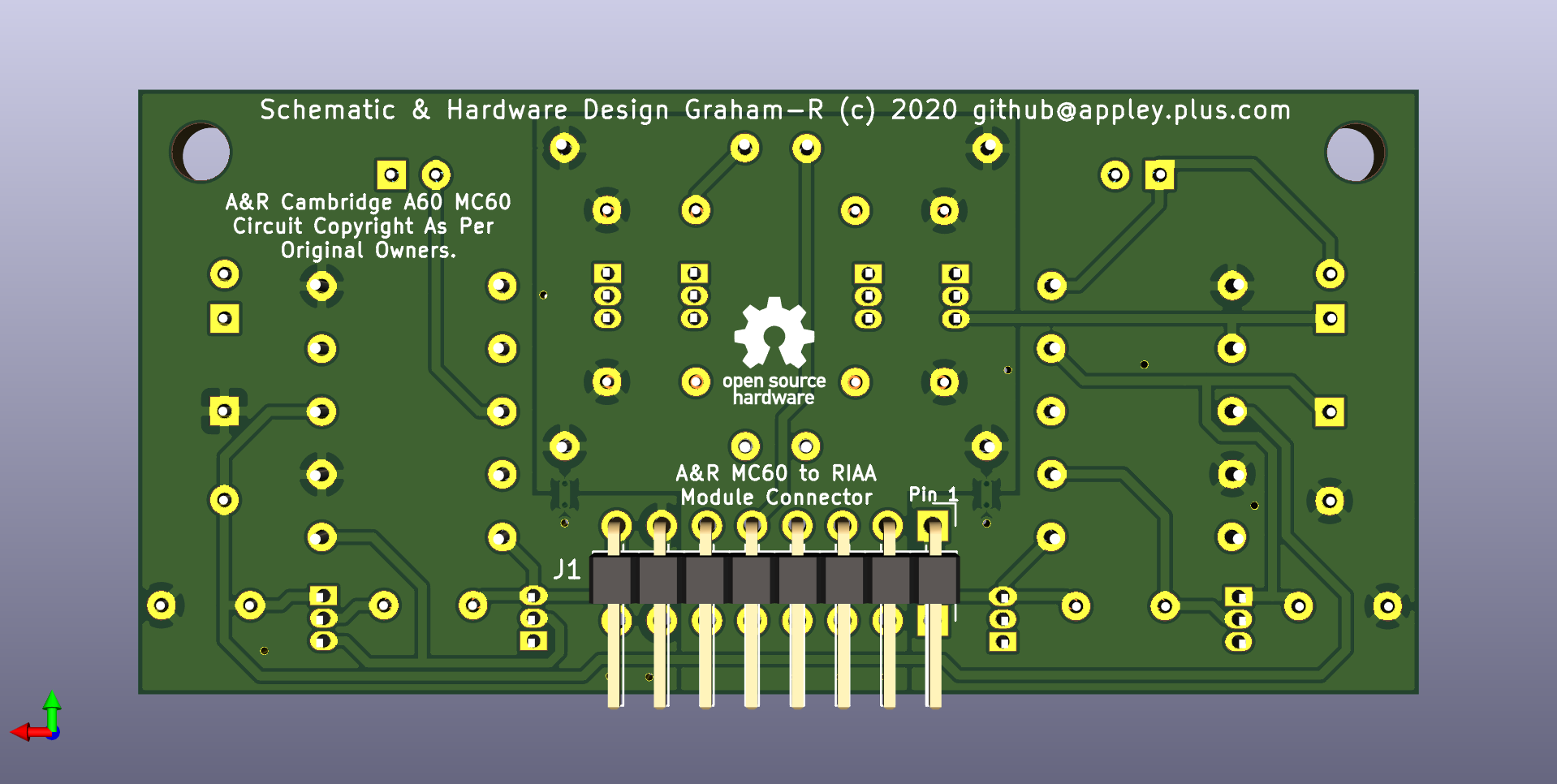
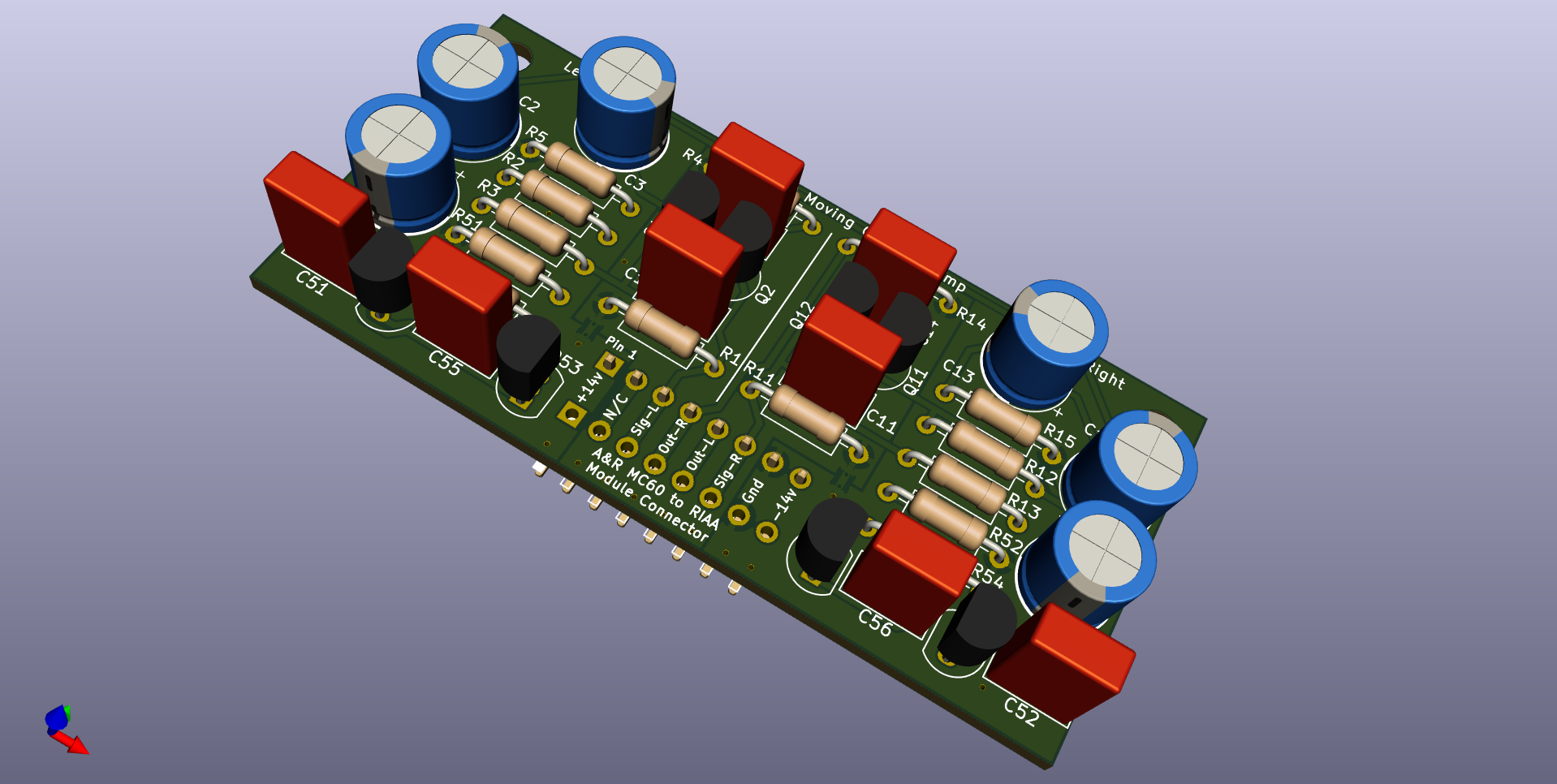
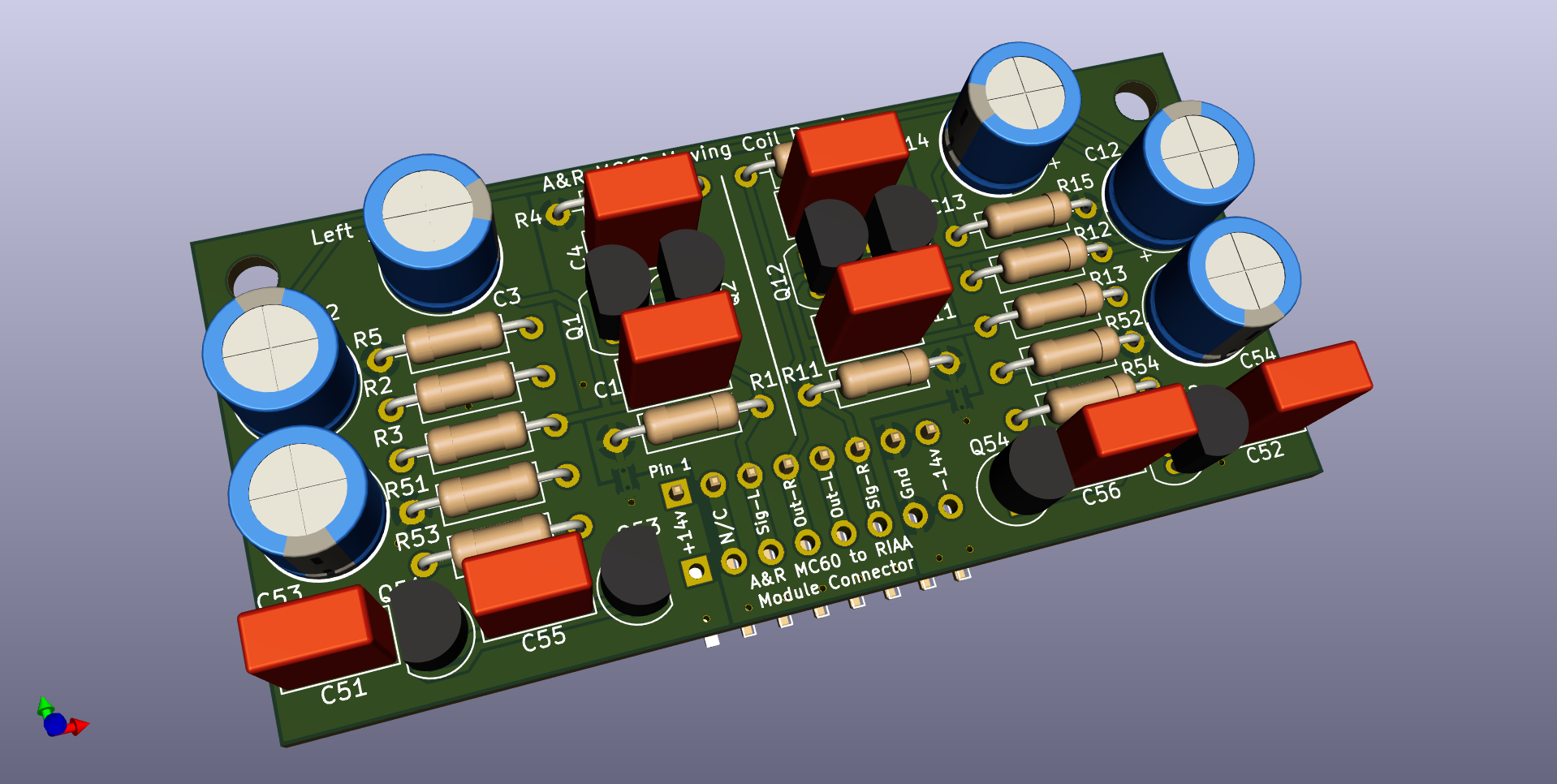
For the past few weeks I have been teaching myself to use KiCAD (I might be needing this for work....), so I chose a couple of subjects and started converting schematics into actual PCB designs (i.e. Gerbers).
These included some Jaguar car reversing camera RGB interfaces, and the A&R A60, the latter was so I could eventually make a 4 channel car audio system for a car, and perhaps also a 'clone' A&R A60. I have completed various Power Amp version, the pre-amp/tone controls and the RIAA module. I haven't yet got around to ordering any PCB's for these yet - I am loathe to use the Chinese fabs after recent events.
This thread is concerned with the MC60 moving coil module, I don't have one of these and when they do come up for sale they are stupidly expensive considering what they are (simple).
So I knocked one up myself, which is identical apart from two changes - I am using different transistors in the amp stage and the connector seems to be an obscure (French ?) thing called a 'Pressac'.
For the latter I decided to use a standard pin socket to replace the existing PCB mounted connector and either a straight or 90 degree pin header (think Raspberry Pi), these can be updated at a later date.
Anyway if this works I may well design an updated version with at least a better PSU.
I have just ordered 3 PCB's from OSHPark which are likely to take several weeks to arrive so until then not much more to say, apart from uploading a schematic.
Here are some pics of how it should appear when built.




Last edited:


